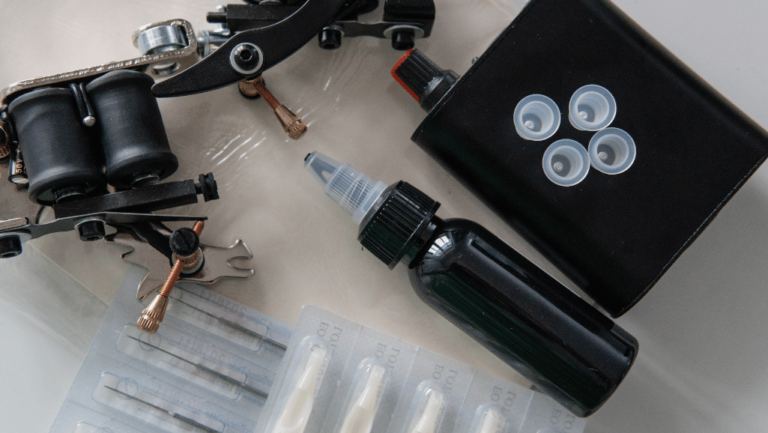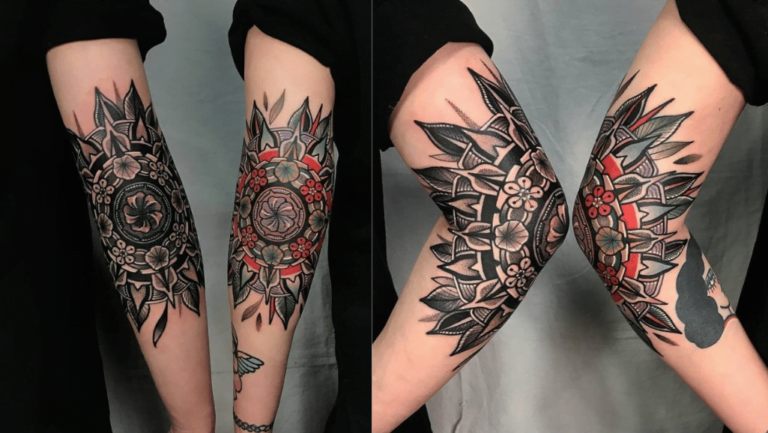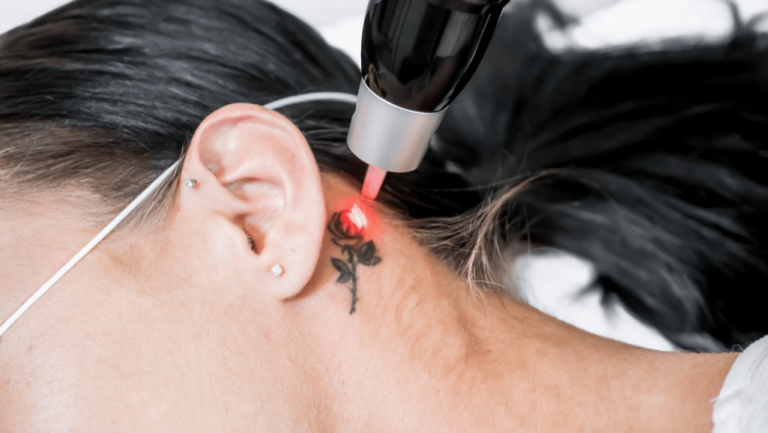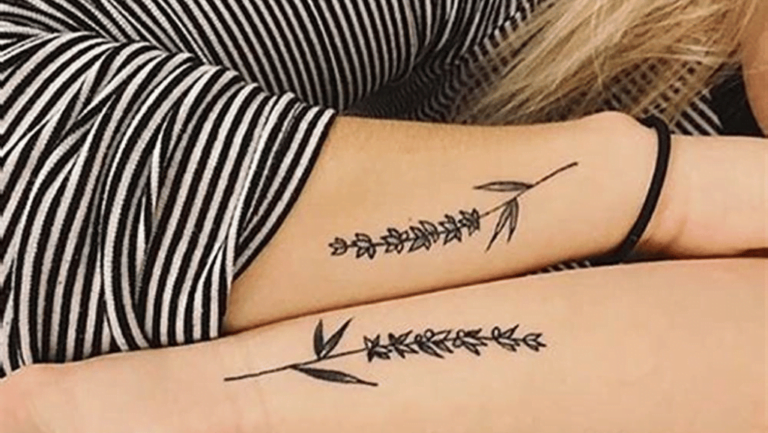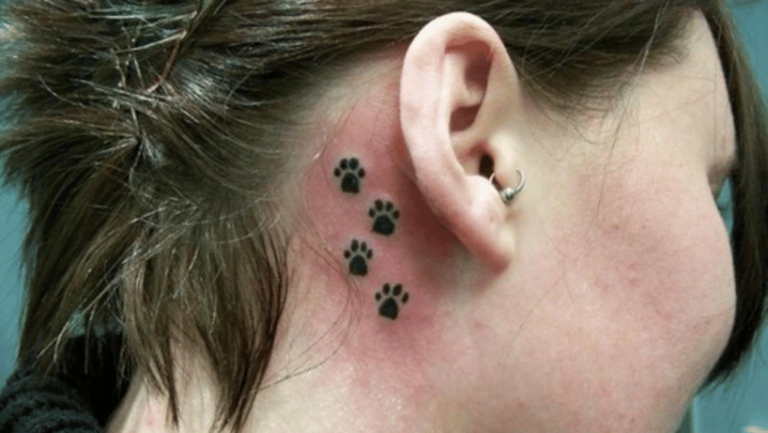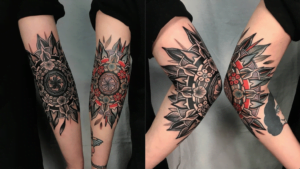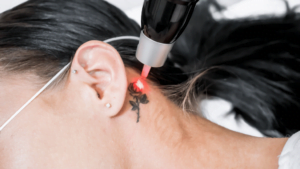After getting a fresh tattoo, many people eagerly look forward to enjoying their favorite activities, including swimming. However, it’s important to understand the healing process of tattoos and the potential risks associated with swimming before diving into the water. Tattoo artists recommend waiting at least 2-4 weeks before swimming to prevent bacterial infections, skin irritation, and damage to the tattoo design.
The healing process of tattoos can vary from person to person, but generally takes anywhere from 2 to 4 weeks, or even longer for some individuals. Factors such as the size and location of the tattoo, the individual’s skin type, and the quality of aftercare provided can affect the healing time. Swimming with a fresh tattoo can expose it to drying effects, fading, discoloration, and an increased risk of bacterial infections. Chlorine and saltwater can have negative effects on a fresh tattoo and can cause irritation, fading, and leaching of the ink.
However, if swimming is necessary before the tattoo is fully healed, there are precautions that can be taken. Waterproof dressings and bandages can help protect the tattoo from water and bacteria. It is important to clean and care for the tattoo after swimming to minimize the risk of infection and maintain its appearance.
Key Takeaways:
- It is recommended to wait 2-4 weeks before swimming after getting a tattoo to allow for proper healing.
- Factors such as tattoo size, location, individual skin type, and aftercare can affect healing time.
- Swimming with a fresh tattoo can lead to drying, fading, and increased risk of bacterial infections.
- If swimming is necessary before full healing, waterproof dressings and bandages can provide protection.
- Proper post-swim care is crucial to minimize infection risk and maintain the tattoo’s appearance.
Understanding the Healing Process of Tattoos
Proper aftercare is crucial for the health and appearance of a newly tattooed skin. Tattoos go through several stages during the healing process, which can vary in duration from person to person. Understanding these stages and the factors that can affect healing time is essential for ensuring the best possible outcome for your tattoo.
- Swelling and Pain: In the initial days after getting a tattoo, it’s common for the area to be swollen and tender. The body’s natural response to the tattooing process is inflammation, which results in these symptoms.
- Oozing and Scabbing: As the healing process progresses, the tattoo may start to ooze a clear or slightly colored fluid. This is a natural part of the healing process, and scabbing can occur as the tattooed skin starts to form a protective barrier.
- Itching and Peeling: The tattooed area may become itchy as it heals. It’s important to resist scratching or picking at the tattoo, as this can lead to complications and affect the final outcome. Peeling of the skin is also common during this stage.
The full healing of a tattoo typically takes around 2 to 4 weeks, although it can take longer for some individuals. However, healing time can be influenced by various factors, including the size and location of the tattoo, your skin type, and the quality of aftercare you provide. It’s important to follow your tattoo artist’s instructions for aftercare, which may include cleaning, moisturizing, and avoiding certain activities, such as swimming, that can irritate the skin and prolong the healing process.
During the healing process, it’s crucial to keep the tattooed area clean and moisturized to prevent infections and promote proper healing. Avoid exposing the tattoo to excessive sunlight, water, or any substances that may irritate the skin. By taking proper care of your tattoo, you can help ensure that it heals well and looks its best.
Tattoo Healing Time: Factors to Consider
The healing time of tattoos can vary depending on several factors. Some important considerations include the size and complexity of the tattoo design, as well as the location on your body. Tattoos on areas with more blood flow, such as the arms and legs, may heal more quickly compared to tattoos on areas with less circulation, like the feet or hands. Additionally, individual differences in skin type can impact healing time, with some people naturally healing faster than others.
Another crucial factor that influences healing time is the quality of aftercare. Following proper aftercare instructions, including cleaning the tattoo regularly, avoiding abrasive substances, and keeping the area moisturized, can help expedite the healing process. On the other hand, neglecting aftercare or engaging in activities that irritate the skin, such as swimming or excessive sun exposure, can significantly delay healing.
Risks of Swimming with a Fresh Tattoo
Swimming with a new tattoo can pose several risks and potential complications. The effects of water on tattoos can lead to damage, infections, and other undesirable outcomes. It’s important to understand these risks before deciding to take a dip.
Effects of Water on Tattoos
Water exposure can have detrimental effects on a fresh tattoo. When exposed to water, the skin can become dry, leading to increased itching, flaking, and scabbing. This can disrupt the healing process and potentially affect the final appearance of the tattoo.
Additionally, chlorinated water in swimming pools and saltwater in oceans can cause further damage. Chlorine and salt can irritate the skin and even lead to fading, discoloration, and blurred lines in the tattoo design.
Furthermore, swimming in pools, lakes, or oceans increases the risk of bacterial infections. These bodies of water are filled with bacteria, and open wounds like tattoos are particularly susceptible to infection. Bacterial infections can not only prolong the healing process but also compromise the overall health of the tattoo.
The Risks and Precautions
Swimming with a new tattoo carries inherent risks. Open water, such as lakes and oceans, pose the highest risk of bacterial infection. The presence of bacteria combined with the vulnerability of a fresh tattoo can lead to serious complications.
To mitigate these risks, it is advisable to wait until the tattoo is fully healed before swimming. This generally takes 2-4 weeks, but it may take longer for some individuals. It’s essential to give the tattoo enough time to heal and for the skin to fully recover.
If swimming cannot be avoided during the healing process, waterproof dressings and bandages can provide some protection for the tattoo. These dressings create a barrier between the tattoo and water, minimizing the risk of water damage and potential infections.
After swimming, it is crucial to clean the tattoo gently with warm water and mild soap. This helps remove any chlorine or salt residue that may have come into contact with the tattoo. Pat the area dry and apply a thin layer of fragrance-free moisturizer to keep the skin hydrated and aid in the healing process.
To summarize, swimming with a fresh tattoo involves significant risks, including water damage, infections, and fading. It is best to wait until the tattoo is fully healed before swimming. However, if swimming is unavoidable, taking precautions such as using waterproof dressings and practicing proper post-swim care can help minimize the risks and maintain the health and appearance of the tattoo.
Protecting Your New Tattoo While Swimming
If you find yourself needing to swim before your tattoo is fully healed, there are precautions you can take to protect it from water damage and bacterial infections. Waterproof dressings and bandages act as a barrier between your tattoo and water, keeping it safe and secure.
Recommended Waterproof Dressings for Tattoos:
1. Saniderm Tattoo Aftercare Bandage: Provides a protective seal over your tattoo, preventing water, dirt, and bacteria from entering. Its breathable design allows for oxygen flow and minimizes scabbing and irritation.
2. Recovery Derm Shield Tattoo Aftercare Bandage: Designed specifically for tattoo aftercare, this dressing offers protection against water, dirt, and friction. It promotes faster healing and reduces the risk of infection.
3. Tattoo Aftercare Waterproof Bandage: Formulated to be waterproof, this bandage shields your tattoo from water while allowing it to breathe. It also contains an anti-bacterial agent to further protect against infections.
4. Nexcare Tattoo Bandages: These bandages are waterproof, transparent, and gentle on sensitive skin. They provide a protective barrier while allowing your tattoo to heal naturally.
5. Nuanchu Waterproof Bandage: Made from high-quality PU film, this bandage is waterproof, breathable, and hypoallergenic. It effectively protects your tattoo from water, dirt, and bacteria.
After swimming, it’s essential to properly clean and care for your tattoo. Gently wash the area with warm water and mild soap, pat it dry using a clean towel, and apply a thin layer of fragrance-free moisturizer to keep the skin hydrated and prevent dryness.
Remember, post-swim tattoo care is crucial for minimizing the risk of infection and maintaining the health and appearance of your tattoo. By taking these precautions, you can enjoy swimming while keeping your tattoo safe.
Comparison of Waterproof Dressings for Tattoos
| Waterproof Dressing | Features |
|---|---|
| Saniderm Tattoo Aftercare Bandage | Protective seal, breathable design, minimizes scabbing and irritation |
| Recovery Derm Shield Tattoo Aftercare Bandage | Specifically designed for tattoo aftercare, promotes faster healing, reduces infection risk |
| Tattoo Aftercare Waterproof Bandage | Waterproof, breathable, anti-bacterial agent |
| Nexcare Tattoo Bandages | Waterproof, transparent, gentle on sensitive skin |
| Nuanchu Waterproof Bandage | High-quality PU film, waterproof, breathable, hypoallergenic |
Signs Your Tattoo Is Ready for Swimming
Knowing when you can safely swim after getting a tattoo is crucial to avoid complications and protect the beautiful artwork on your skin. Here are some signs that indicate your tattoo is fully healed and ready for swimming:
- Absence of redness: A healed tattoo should no longer have any redness or inflammation around the design.
- No itching: If your tattoo is no longer itchy, it indicates that the healing process is complete.
- No scabbing: The presence of scabs on your tattoo is a sign that it is still healing and not yet ready for swimming.
- No flaking: A fully healed tattoo will not have any flaking or peeling skin.
- Smooth, even appearance: Your tattoo should have a smooth and even surface without any rough areas, flaking, or scabbing.
If you observe these signs, it is likely that your tattoo is healed and ready to be exposed to water. However, if you are unsure about the healing progress, it is always a good idea to consult with your tattoo artist or a medical professional before taking a dip. They can assess the condition of your tattoo and provide personalized advice based on their expertise.
| Signs Your Tattoo Is Ready for Swimming | Not Ready | Ready |
|---|---|---|
| Absence of redness | No | Yes |
| No itching | No | Yes |
| No scabbing | No | Yes |
| No flaking | No | Yes |
| Smooth, even appearance | No | Yes |
Conclusion
In conclusion, it is crucial to exercise caution when considering swimming after getting a tattoo. While everyone’s healing process may differ, it is generally recommended to wait at least 2-4 weeks before taking a dip to allow for proper healing and minimize the risk of complications.
Swimming with a fresh tattoo can pose various risks, including drying, irritation, fading, and an increased susceptibility to bacterial infections. The exposure to chlorine and salt water can further exacerbate these issues, potentially leading to discoloration and ink leaching.
If swimming is unavoidable during the healing period, employing waterproof dressings and bandages can provide some protection. However, it is important to remember that these precautions are not foolproof, and it is essential to prioritize proper post-swim care.
Once your tattoo has fully healed, you can safely enjoy swimming without compromising its health and appearance. Look for signs such as the absence of redness, itching, scabbing, and flaking, as well as a smooth, even appearance without any peeling. When in doubt, consult with your tattoo artist or a healthcare professional for guidance on when it is safe to swim after getting a tattoo.
FAQ
Can I swim after getting a tattoo?
What is the healing process of tattoos?
What are the risks of swimming with a fresh tattoo?
How can I protect my new tattoo while swimming?
What are the signs that my tattoo is ready for swimming?
Are there any precautions I should take when swimming with a new tattoo?
Forhad
Forhad's writing is not just about the artistry of tattoos or the latest trends in the industry; it's an exploration of the deep-rooted connections people have with their tattoos, reflecting personal narratives, cultural histories, and moments of transformation. Through a mix of in-depth features, personal narratives, and insightful analyses, he sheds light on the multifaceted nature of tattooing, revealing the emotional and cultural layers that lie beneath the surface.






